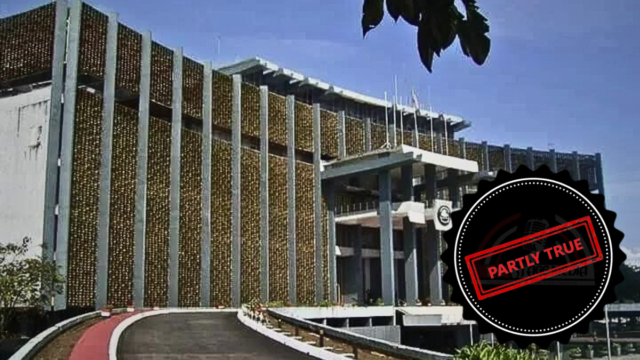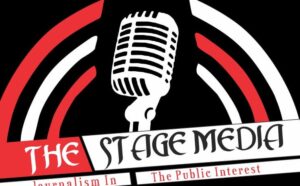
Claim: The mansion was Designed by an -American architect, It has an eight-storey semicircular structure/floors and floors. The completion of the mansion took three years, from 1960 to 1963.
Source: Shine Liberia
Verdict: Partly True. True to some of the points except that information about the building having a sprawling shape cannot be verified and the construction was not entirely an-American architect,v but an Italian architect also contributed.
Full Text: a local blog (Shine Liberia) with 99 likes and 22K followers made a post about the Liberia Executive Mansion. We commenced a search on a few of the information provided to the public by the blog. Key amongst them are the construction of the mansion, the number of floors, the construction company, and the engineer and the architect of the mansion.
Interesting Facts about the Executive Mansion of Liberia:
-The mansion was Designed by an -American architect, Alexander Parris.
-The building has a sprawling shape (spreading out over a large area in an irregular way)
-It has eight storey semicircular structure/floors.
-The completion of the mansion took three years, from 1960 to 1963.
-The project was designed and supervised by Stanley Engineering Company of Africa, and the Construction Contractor was Liberian Construction Corporation (LCC).
Verification: The Executive Mansion of Liberia is the official residence and workplace of the country’s president. Located across the street from the Capitol Building in the Capitol Hill district of Monrovia, the current building was constructed during the presidency of William Tubman, which lasted from 1944 to 1971.
The construction started in 1961 and was completed in 1964.
The Executive Mansion was the scene of the murder of Tubman’s successor, President William Tolbert (in office 1971–1980), during the 1980 coup d’état.
According to public hearings of the Truth and Reconciliation Commission (TRC), blood rituals and other sacrifices were performed at the Executive Mansion during the presidency of Samuel Doe, which lasted from 1980 to 1990. They were meant to render the president as well as the Executive Mansion impregnable. Hundreds of people, especially men, are also said to have been killed on the grounds of the Executive Mansion in the wake of the failed coup attempt by Thomas Quiwonkpa in 1985.
The Executive Mansion was destroyed by fire on July 26, 2006, during the 159th-anniversary celebration of the adoption of the Liberian Declaration of Independence.
President Ellen Johnson Sirleaf (in office 2006–2018) was at the time feting foreign guests and dignitaries in the gardens of the Executive Mansion. As of early 2021, a reopening was planned for early 2022. On 14 February 2022, the Executive Mansion was reopened.
Who was the architect of the Executive Mansion:
Does the mansion have eight storey semicircular structure/floors?
Yes, the blog is partly right. The building has an overall area of around 26,500 square feet and is an eight-story horizontal arch-like (semicircular) construction made mostly of reinforced concrete poles and a lintel system.
Six elevators and four large staircases provide vertical movement throughout the whole structure. The public uses the other four elevators in addition to the president and distinguished guests who utilize one elevator exclusively. Another elevator is used for freight.
The President of Liberia’s official house, the President and Staff of the Ministry of State offices, the reception and housing for guests and dignitaries, and the maintenance and technical parts are the four primary uses of the Executive Mansion. The building’s centrepiece is a complex northern fountain.
Did completing the executive mansion take three years: Yes, the blog is also right on this. The building of the Executive Mansion took three years, from 1960 to 1963 to complete and was officially opened in 1964.
Was the Mansion project designed and supervised by Stanley Engineering Company of Africa; and the Construction Contractor was Liberian Construction Corporation (LCC):
Though Stanley Engineering Company of Africa developed and oversaw the project, and Liberian Construction Corporation (LCC) served as the construction contractor. Dr. Elwood Dunn, a historian and author said an Israeli firm was involved in its construction.
Does the building have a sprawling shape: this claim can not be established.
Conclusion: The claim is Partly True. We agreed with the blog per our research that the information posted is partly true except that we could not find anything to authenticate the claim of the building having a sprawling shape and the construction was not an entirely an-American architect but an Italian architect also contributed.




